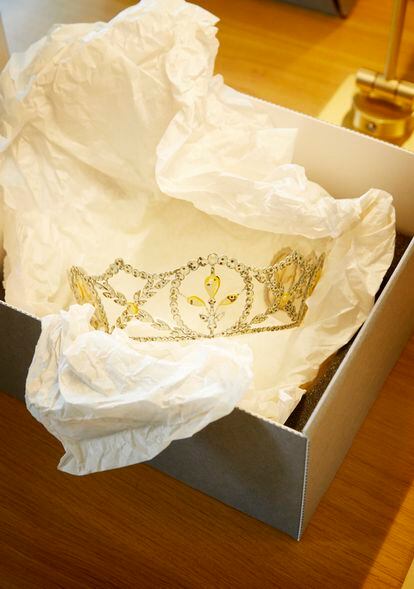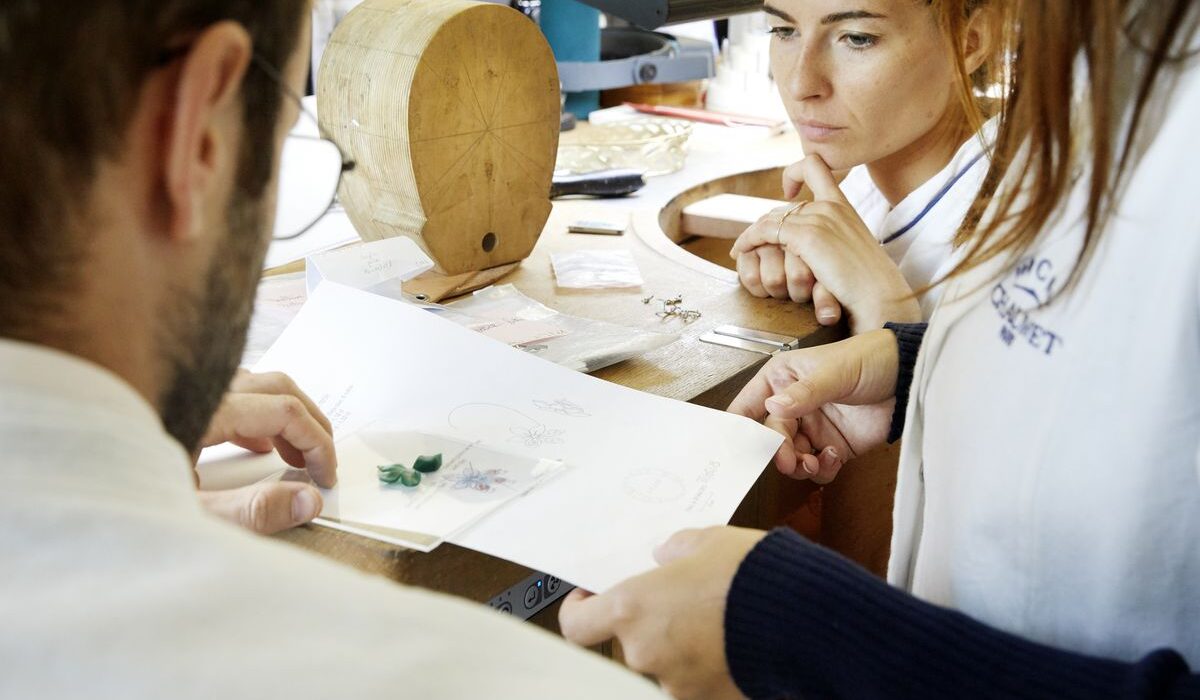Chaumet, the French luxury jewelry house’s airy workshop in Paris, overlooks Trajan’s column in the center of Place Vendôme. The jeweler that made pieces for Josefina Bonaparte, Eugenia de Montijo and Olga Picasso, has its artisans hard at work creating a tiara for a young and wealthy Chinese entrepreneur. That’s all we know about this important customer who demanded the tiara be ready for her company’s final board meeting of the year. Adorned with a resplendent gold and diamond tiara worth over $3 million, the businesswoman aims to exude an aura of divine elegance, assert her dominance in the boardroom, and leave no doubt as to who’s in charge.

Who orders a custom-made tiara these days? For Chaumet, founded in 1780 and owned by LVMH since 1999, the answer is all sorts of people — queens, princesses, brides and businesswomen. Thibault Billoir, the keeper of Chaumet’s archives, says they made Queen Victoria Eugenie’s tiara adorned with fleurs-de-lis, Josefina Bonaparte’s wheat-ear diadem, and wedding rings for illustrious figures like Eugenia de Montijo (Empress of France from her marriage to Emperor Napoleon III), and Olga and Pablo Picasso. However, Chaumet strictly upholds a policy of safeguarding clients’ data for a minimum of 75 years. The decision to disclose information about their jewelry remains solely with the clients. But Chaumet CEO Jean-Marc Mansvelt smiled and said, “We’re getting more orders for tiaras than ever before.”
The Chaumet house gained fame during the first French empire (1804-1815). According to Claire Gannet, the brand’s heritage director, in 1805 Napoleon appointed Chaumet founder Marie-Étienne Nitot as the imperial jeweler. Nitot then embarked on a mission to revive the ears of wheat, laurel wreaths and other symbols of the Roman Empire. “Just like a new European Caesar, they wanted the empress and ladies of the court to wear diadems as fashion accessories,” said Gannet. But how can we explain the popularity of a heavy tiara in today’s fluid times? Gannet says they’ve never gone out of fashion. “During the art deco period, which lasted just 10 years, the Grand Duchess of Luxembourg acquired some stunning stones and commissioned a very modern tiara. Surprisingly, Maria Theresa, the current duchess, still wears it. It’s actually the tiara that inspired Wonder Woman’s iconic headpiece. She’s the first female comic book character with superpowers, all centered around her tiara, by the way.” Gannet won’t go as far as saying the tiara has become a feminist symbol, but offers her perspective on why it remains so popular. “The weight actually affects our body balance. Just try putting one on and notice how your posture changes and your attitude gets lifted. It’s the same when you try on a tiara, instantly transforming you into someone with a regal and graceful stride. It’s fascinating to see how these accessories make us stand taller and exude elegance, like a dancer or a queen.”
Making a tiara typically takes about a year and a half, but Chaumet’s wealthy clients are often impatient and want them in eight months. To meet these deadlines, Benoît Verhulle, the head of the workshop, has to pair up his artisans — two jewelers, two setters and two polishers. “It takes nine months for a baby to be formed. That’s what I need to do things right.”
Since its founding in 1780, Chaumet has had 13 workshop managers. On average, each manager has held the position for 20 years. Verhulle is the current workshop manager, overseeing the cutting and setting of diamonds, as well as the creation of the house’s collections and special orders, like a diadem with moving wings made from heirloom jewels. “It was a bit like Asterix’s helmet,” said Verhulle, invoking the indomitable French comic book character. His team is currently working on the tiara for the Chinese businesswoman and also a diadem for a woman from a notable European family. “She wants to pass it on to her daughter-in-law, who’s finally going to bring a baby boy into their lives after having several girls,” he said. In certain families, traditions remain as they were 250 years ago.
The artisans use a combination of modern technology like computers and 3D printing, alongside traditional iron and wooden benches and tools that can last more than 150 years. They seamlessly transition between digital measurements and manual adjustments, showing the intricate process of creating fine jewelry today. “When it comes to luxury, we believe in the importance of human touch and time. Whether it’s crafting the center of a tiara, necklace or ring, we always rely on our skilled hands. We save 3D computer design for the repetitive aspects of the pieces,” said Verhulle.
A life-size model of a head sits on a jeweler’s table. Verhulle explains that they scan the heads of tiara clients. This helps with testing and ensures a perfect fit for each individual, because not all heads are the same — European heads tend to be oval, while Asian heads are rounder. Some customers wear tiaras as a crown, while others wear them on their foreheads. But in nearly every case, customers want their tiaras to be imposing.
Chaumet is the only major jewelry brand that still has a workshop in Place Vendôme (number 12, to be exact). But during the 19th century, the area had the highest concentration of goldsmiths per square meter in France. “In the past, jewelers used to travel to the Versailles palaces and Parisian mansions of their clients. However, this changed in the 19th century when many opened their own shops and customers flocked to Place Vendôme,” writes Marie Claude Sicard in her 2007 book Luxury, lies and marketing.
Chaumet’s tiara room is located on the first floor. It serves as a fitting room and is adorned with countless prototypes that have been crafted for illustrious heads for over two centuries. In 1849, Chopin passed away in this room, a few days after composing his final mazurka, as he gazed down at Place Vendôme. Chaumet’s artisans work one floor up and enjoy the same breathtaking views. “To work with gemstones, natural light is essential,” said Mansvelt. “Opening up the workshops to the square has been like inviting everyone to peek into the kitchen of a great chef — a way of showcasing our savoir faire,” said Verhulle.
Chaumet primarily targets the Asian market nowadays. In addition to their traditional clientele of royal houses and illustrious European families, they now cater to “new money clients” from technology companies. Surprisingly, these customers prefer tangible and stable investments like gold and diamonds, rather than virtual and volatile assets such as Bitcoin and Ethereum cryptocurrency. Jewelry has a timeless aura about it. “If there’s a war or a revolution, people abandon everything and run away with the jewels, right?” said Mansvelt. Money is a coward, always looking for a safe haven.
Sign up for our weekly newsletter to get more English-language news coverage from EL PAÍS USA Edition

